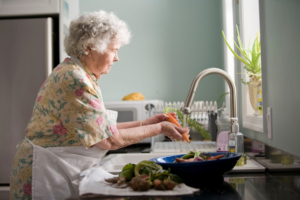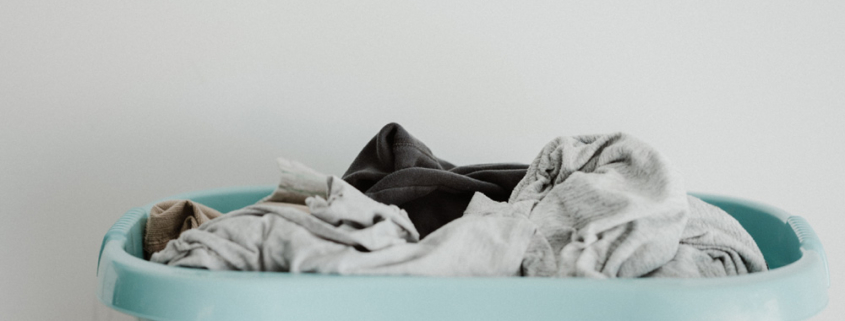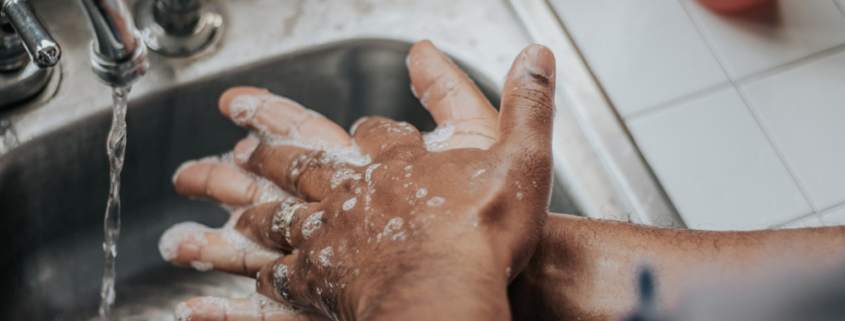When disaster strikes, maintaining proper hygiene is important for your health and well-being. Ensuring proper hygiene is directly linked to the health and safety of individuals and communities. Neglecting sanitation can lead to the spread of diseases and infections, which can be particularly dangerous during already challenging times. In this article, we’ll explore comprehensive sanitation tips and tricks that can help you, your family, and your community stay clean and healthy during times of crisis.
Hand Hygiene and Sanitization
- Hand Sanitizers: Stock up on alcohol-based hand sanitizers and portable handwashing stations. Encourage regular handwashing, especially before meals and after using the restroom.
- Wet Wipes: Wet wipes are versatile and can be used for hand and face cleaning when water is scarce.
- Soap and Water: If water is available, regular handwashing with soap is still the most effective way to prevent the spread of illnesses. Teach your family the importance of thorough handwashing.
DID YOU KNOW? When it comes to handwashing and general hygiene, the temperature of the water you use is less important than the duration and thoroughness of the washing. Both warm and cold water can effectively remove dirt, bacteria, and viruses from your hands, as long as you follow the proper handwashing technique.
The key factors to consider are:
 Duration: The recommended handwashing duration is at least 20 seconds. This is crucial for ensuring that you thoroughly clean all parts of your hands. Remember: tops and bottoms and in between!
Duration: The recommended handwashing duration is at least 20 seconds. This is crucial for ensuring that you thoroughly clean all parts of your hands. Remember: tops and bottoms and in between!- Soap: Soap is essential for breaking down and removing germs and contaminants from your hands. Ensure you use soap and lather well during handwashing.
- Friction: Rubbing your hands together vigorously and ensuring you cover all areas, including the backs of your hands, between your fingers, and under your nails, is essential.
- Rinse: Rinse your hands thoroughly to remove soap and contaminants.
- Drying: Dry your hands with a clean towel or air dryer to prevent the spread of germs.
In many cases, warm water may be more comfortable for handwashing, especially during cold weather, but it’s not necessary for effective hand hygiene.
Water Purification and Safe Storage
- Water Filters: Invest in water purification filters or purifying tablets. These tools can help ensure your water supply remains safe to drink and wash with.
- Water Storage: Store an ample supply of water in food-grade containers to ensure you have clean water available.
Toilet Alternatives
- Portable Toilets: Portable camping toilets can be incredibly convenient when regular plumbing is unavailable. Make sure to stock up on sanitation supplies for these toilets. Consider the Luggable Loo!
- Biodegradable Toilet Paper: Ensure you have a supply of biodegradable toilet paper in your emergency kit. Lets save the environment wherever we can!
- Plastic Bags: Use plastic bags for waste disposal in portable toilets, and securely tie them for disposal.
Most importantly – Wash Your Hands after!
Personal Hygiene Essentials
- Wet Wipes: Wet wipes are not only useful for hand and face cleaning but can also be used for general body cleaning when water is scarce.
- Dry Shampoo: Dry shampoo can help maintain hair hygiene when traditional washing isn’t possible.
- Washcloths: Warm water and a washcloth may just feel like heaven if showering isn’t an option

Special Considerations for Vulnerable Populations
- Elderly Family Members
- Young Children
- Pregnant Women
- Mental Health Need
All of these groups of people have various needs, be mindful of those needs, and use your best hygiene practices!
Hygiene Education
Learn about the importance of proper hygiene and sanitation practices. Create an emergency plan that includes sanitation guidelines, and make sure everyone is familiar with it. Here are some reasons WHY it’s important to be sanitary and hygienic:
-
- Disease Prevention: Good hygiene practices, such as handwashing and cleanliness, are the first line of defense against infectious diseases. Regular handwashing can prevent the spread of illnesses like colds, flu, and foodborne diseases.
- Reduced Health Risks: Practicing good hygiene reduces the risk of infections and illnesses. It can also minimize the severity of an illness if it does occur, leading to quicker recovery.
- Personal Well-Being: Good hygiene contributes to an individual’s overall physical and mental well-being. Feeling clean and fresh can boost self-esteem and mental health.
- Public Health: By practicing good hygiene, your family not only protects themselves but also the community. During public health crises, like pandemics, your family’s hygiene practices can help prevent the spread of diseases to vulnerable populations.
- Life Skills: Teaching hygiene is about imparting life skills. These skills are not only essential during a crisis but in everyday life. Proper hygiene habits are valuable and applicable in any situation.
- Practicing good hygiene shows respect for others. It demonstrates that your family cares about the health and well-being of those around them.
Periodic Maintenance
- Regular Inventory Check: Periodically check and update your emergency sanitation supplies. Ensure that items like hand sanitizers and wet wipes haven’t expired or are dried out and that your water purification tools are in good working condition.
Proper sanitation during a crisis is not just about cleanliness; it’s about safeguarding your health and the health of your loved ones. By being well-prepared and knowledgeable about sanitation practices, you can minimize health risks and maintain a sense of normalcy during challenging times.









 Squeezing excess wash water out of clothes is an important step in the laundry process, especially if you’re handwashing. Here are some tips to help you do it effectively:
Squeezing excess wash water out of clothes is an important step in the laundry process, especially if you’re handwashing. Here are some tips to help you do it effectively:

